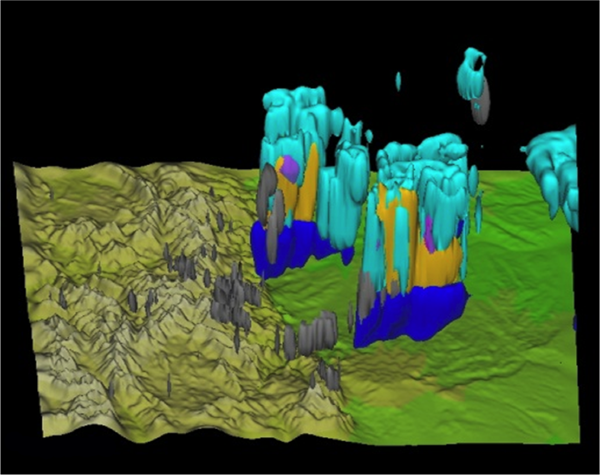
The U.S. just picked out a spiffy new supercomputer, called "Cheyenne." It will be capable of 5.3 quadrillion calculations per second, and will have a whopping 313 terabytes of storage memory. And all of that power will be directed toward accurately predicting severe weather and the future of climate on Earth.
The National Center for Atmospheric Research (NCAR) selected the machine following a "competitive open procurement process" to update its current supercomputer, called "Yellowstone." Cheyenne thoroughly outstrips Yellowstone, and, once it becomes operational in 2017, will be capable of 2.5 times more scientific computing than its predecessor.
The new system, built by Silicon Graphics International Corp. (SGI), will have a "peak computation rate of more than 3 billion calculations per second for every watt of power consumed," NCAR's Irfan Elahi, project manager of Cheyenne, said in a press release Monday.
Data about weather, climate, air quality and space weather will all be processed in Cheyenne. The computer will help predict phenomena like water levels in streams and reservoirs as much as a year ahead of time, illuminating the risks of floods and droughts; the probability of clusters of intense storms striking a particular U.S. county at any given time; how cloud cover and sun strength could affect how much power will be generated by an array of solar panels up to days in advance; the impacts of climate change and sea level rise on regions around the world; and how solar storms might prompt geomagnetic storms in Earth's upper atmosphere.
Yellowstone already performs many of these functions, but Cheyenne will do it better, and faster.

"Whether it's the threat of solar storms or a heightened risk in certain severe weather events, this new system will help lead to improved predictions and strengthen society's resilience to potential disasters," said Anke Kamrath, the director of operations at NCAR's Computational and Information Systems Laboratory in Wyoming.
The new system is funded by the National Science Foundation and the University of Wyoming, whose researchers will conduct much of the work around "better understanding such areas as the surface and subsurface flows of water and other liquids, cloud processes, and the design of wind energy plants," Bill Gern, University of Wyoming's vice president for research, told the University of Wyoming News on Monday.
According to NCAR, over 2,200 scientists from more than 300 universities and federal labs have used the resources at the Wyoming supercomputing center since it opened in 2012.
Uncommon Knowledge
Newsweek is committed to challenging conventional wisdom and finding connections in the search for common ground.
Newsweek is committed to challenging conventional wisdom and finding connections in the search for common ground.
About the writer
Zoë is a senior writer at Newsweek. She covers science, the environment, and human health. She has written for a ... Read more
To read how Newsweek uses AI as a newsroom tool, Click here.








